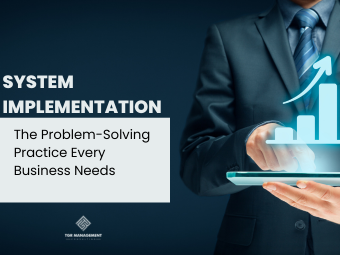
In March of 2022, everyone was talking about “quiet quitting.” The idea of disgruntled employees who showed up to work to do the bare minimum pointed toward a significant problem that still looms large in a post-pandemic world.
Finding good people.
The recruitment process can be a stressful experience for everyone involved. While employees face difficulties finding the right job fit, many complications can also arise on the employer’s side.
In 2020, the Support the Enlisted Project (STEP), a non-profit organization that helps military families in financial need, experienced these challenges firsthand. During an episode of “The Business of Non-Profits,” Tony Teravainen, the CEO and Co-Founder of STEP, discussed facing a shortage of qualified candidates and how they went about recruiting top talent.
A Staffing Issue
During the pandemic, everyone faced challenges in daily operations, and STEP was no different. Usually, STEP could rely on military spouses to jump in and fill positions. These spouses were usually a perfect fit as they understood the difficulties military families face better than anyone. Unfortunately, that ceased to be an option.
As fewer and fewer people were available, Tony found that he was down to a 14-person staff. So he did as many leaders do when hiring top-notch talent seems impossible: he lowered his expectations.
Finding a person who fit 80% of their criteria seemed to make sense when it came down to it. He started settling for “good enough” – someone who would come in and do the bare minimum even if they weren’t a perfect fit for their culture.
It’s easy to see why anyone might make this decision. If you can’t find good people but know you can’t continue operating as you are, settling for a person who’s just “fine” seems like the best option.
But is it?
The Downside of Settling
This is a great time to address that STEP does not receive funding from military families, the military, or the government. This program relies solely on its reputation, its staff, and the generous contributions of donors to continue operating.
In the podcast episode, Stacey mentions being surprised and delighted by how Tony’s current staff greeted her. She thought it was because they assumed she was someone who needed help. Tony explains that it wouldn’t matter who she was: this is a part of his company culture.
Tony wants everyone who walks through the door to be treated with warmth, respect, and care regardless of their background, education, or situation. This means that if a single staff member doesn’t take their work seriously or if they don’t empathize with those military families who are in highly vulnerable positions, it creates a disruption to their culture and damages any chance of establishing trust.
And when your organization’s only goal is to assist struggling families, losing trust is equivalent to a for-profit losing sales.
Finding the Right Person
80% wasn’t enough. Tony consulted his existing employees (a fantastic habit I’ve spoken about in previous blogs), and they agreed. Rather than compromising on the quality of their team, they decided to shoulder the burden of extra work until they could find the perfect candidate to fill the position. (Talk about a DREAM team!)
This still wasn’t a long-term solution. Tony still needed to find someone, but empowered with this knowledge and feedback, he could ensure the new candidate was a perfect fit. That isn’t to say he didn’t have to make changes.
If you can’t settle for an 80% employee (and I’d argue you shouldn’t), positions will stay open longer. If no one in the talent pool is biting based on your requirements – it’s time to reevaluate. You may need to consider increasing pay, upgrading the title, etc.
Tony mentions asking himself the all-important hiring question: “What are we really looking for here, and how can we make this more appealing?” This question is one that everyone in a hiring position should ask themselves, especially if they’re facing a high turnover rate.
Checks and Balances
Once you’ve hired someone you’re sure is a great fit, it doesn’t end there. I have a friend who talks about “kissing frogs.” To find a princess, you have to kiss a few frogs, right? She mentions finding people who look perfect on paper, do great in an interview, and then turn out to be a terrible fit after hiring. How can we filter out the frogs and ensure employees settle in well?
Tony has a great solution. He’s an incredibly active CEO and makes himself available to everyone from staff to community members, and he even takes time to check in with new employees after 45 days. He takes them out to lunch and allows them to express their concerns, needs, and questions directly to him.
He also discusses how he encourages team members to tell him if management fails to meet expectations. He holds everyone accountable just as he expects everyone who walks through their door to be treated with respect.
Get Out of The Way
Another golden takeaway – toward the end of the episode, Tony mentions how he has a master’s degree in executive leadership and how one of his professors spoke of (and I’m paraphrasing here) “hiring good people and getting out of their way.”
Great leaders don’t settle for average team members – they seek out exceptional talent and empower them to succeed. You should step back and trust your team members to carry out their designated responsibilities. Tony describes himself as a janitor and suggests he’s there to fix something if it breaks. While this is definitely a downplay of his role, it’s a great way to stay humble.
Tiffany Rosik is the Founder and CEO of TGR Management Consulting, a company specializing in implementing technology strategies for Fortune 1000 companies. Tiffany goes beyond project best practices by coaching Project Team Leaders on team dynamics and techniques to establish a self-sustaining model that creates a consistent experience and produces results. Connect with or follow Tiffany Rosik on LinkedIn.




